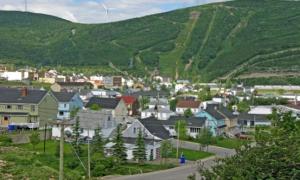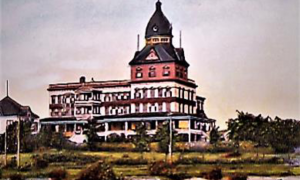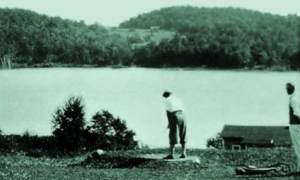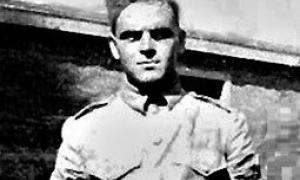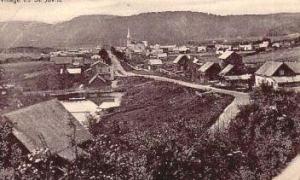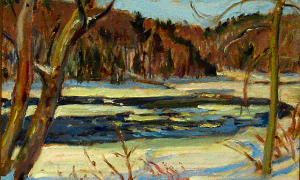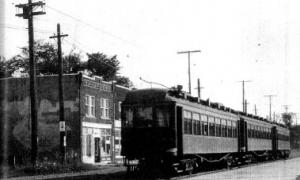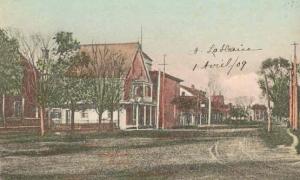Articles
--March 20, 2019.
1. What mineral, discovered 20 kilometres from the Gaspésie littoral in 1909 led to the founding of Murdochville, one of Quebec’s youngest municipalities?
a. Bronze
b. Copper
c. Nickel
d. Gold
2. In what river were traces of this mineral fist discovered by Alfred Miller?
a. York river
b. Dartmouth River
c. Saint-Jean River
d. All of the above
e. Both a and c
Introduction
By the late 1890s, prominent Ottawa lumberman Frederick Wells Avery had become a member of the Ottawa Golf Club (the area’s first golf club, which was founded in 1891), and he had also recently discovered the pleasures of summer resort life in Aylmer, which was beginning to boom as a resort patronized by well-to-do Ottawa residents who wished to escape the city’s frequently hot, humid weather from June to August.
--January 10, 2022.
Canadian Casino Heritage and Lingo
Canada’s casino and gambling industry has gone through a huge transformation over the years, turning into a multi-billion-dollar business. An industry that started with animal bone games thousands of years ago has transformed into lots of online casinos to choose from. As such, Canada is hailed as one of the countries where some of the earliest gambling games were conceived.
--November 26, 2021.
The cover photograph for this book, Gatineau Valley Golf Courses, 1903 – 1933, shows Anson Green about to strike a tee shot at the Larrimac Golf Club in 1930, seven years after the first golf shot was struck on these golf grounds. It turns out that today the golf course of the Larrimac Golf and Tennis Club is the last survivor of at least sixteen golf courses laid out in the Gatineau Valley between 1903 and 1933.
There were four different golf courses laid out at Kingsmere between 1903 and the 1920s.
--June 15, 2020.
--July 31, 2019.
1) d
2) c
3) d
4) c
5) b
6) c
7) c
8) a
9) a
10) b
--July 31, 2019.
1) This photograph, c.1905, shows Main Street in which village, formally known as "the Flat"?
a) North Hatley
b) Coaticook
c) Richmond
d) Ayer's Cliff
--March 21, 2019.
1. B. Copper
2. A. York River
3. A. The first president of the Noranda Mining Company. The former miners’ camp was named after him and was known simply as Murdoch.
4. B. 1,000. 300 houses were built to accommodate these miners between 1952 and 1953.
5. D. The charter required the mayor and all municipal councillors of Murdochville to be able to speak English.
--March 18, 2019.
1. A. There had been a forest fire in the township in 1870. The fire cleared a good amount of undulating land creating an ideal spot on which to construct the Saint-Jovite mission.
2. D. All of the above.
3. C. 8%.
4. B. Paper.
5. A. P’tit Train du Nord.
6. D. Île d’Orléans.
7. A. The clearing of lands and the burning of the debris.
--March 13, 2019.
1. Why was the area in which Curé Samuel Ouimet built the Saint-Jovite mission in 1879 known as “Grand-Brûlé” (big burn)?
a. There had been a forest fire in the township in 1870
b. It was named in honour of Étienne-Brûlé
c. In 1877, a local logging yard caught fire and the flames reached up to 20 metres high
d. The area was named after the intention of the mission: to incinerate satanic spirits
--March 13, 2019.
--February 21, 2019.
1. c. His sister in law, the wife of Denis-Benjamin Papineau. Her name was Angélique-Louise Cornud, and she had donated land on which the parish church and rectory were built.
2. a. Denis-Benjamin Papineau. Though it was his father who had originally purchased the “Petite Nation” seigneurie, Denis-Benjamin Papineau administered the region from 1808 to 1845. He would go on to become the joint Premier of the Province of Canada for Canada East from 1846 to 1848.
--February 20, 2019.
Transit service to the South Shore
--February 20, 2019.
1. The Parish municipality of Saint-Angélique, from which Papineauville would separate in 1894 for 104 years, was formed in 1855 and was named after which member of Louis-Joseph Papineau’s family?
a. His mother
b. His youngest sister
c. His sister in law, the wife of Denis-Benjamin Papineau
d. His oldest daughter
--February 13, 2019.
1. b. Pearl ash from the hardwood forests. Beef and dairy products would later become the main agricultural goods produced in the area.
2. b. American squatters. The Abenakis had hunted the land long before but had not settled permanently. Before 1791, the land had not been parcelled out to British or French-Canadian settlers.
3. d. St. Francis River.
4. b. It would remain an empty buffer zone between the United States and Lower Canada.
5. c. Those who owned the land had no interest in settling it.
--February 12, 2019.
1. What was the very first form of agricultural produce that the early Townships colonists profited from?
a. Squash fields abandoned by members of the Abenaki nation
b. Pearl ash from the hardwood forests
c. Grains (flax, wheat, barley)
d. Beef and dairy products
2. Which group first permanently settled the Eastern Townships region?
a. Loyalists
b. American squatters
c. The Abenaki nation
d. Retired government officials
--February 4, 2019.
1.
c. Canadian Northern Railway (CNoR). This company built the Mount Royal tunnel in 1912 and would merge with the Canadian National Railway (CN) in 1923 in large part due to this cost of this project.
2.
d. All of the above
3.
d. All of the above
4.
a. The Quiet Revolution. At this stage in Quebec’s history, some Francophones began to move into wealthier urban communities such as Mount Royal that had traditionally been anglophone dominated.
--February 4, 2019.
1. By which Canadian railway company was chief engineer Henry Wicksteed, the man who planned and organised the construction of the Mount Royal tunnel, employed?
a. Canadian Pacific Railway
b. Canadian National Railway
c. Canadian Northern Railway
d. Grand Trunk Railway
--September 6, 2018.
1) c
2) a
3) a
4) a
5) c
6) a
7) b
8) c
9) b
10) d
--September 6, 2018.
1) c
2) a
3) a
4) c
5) c
6) a
7) b
8) d
9) b
10) d
